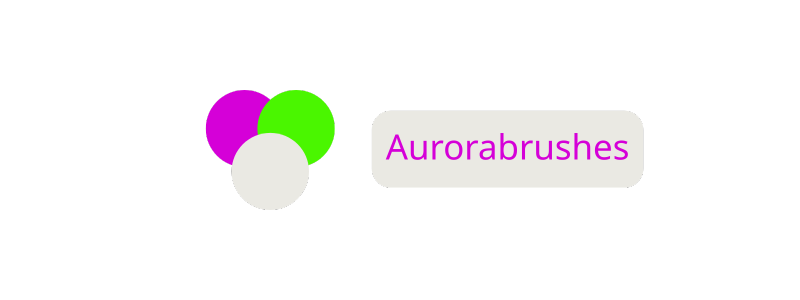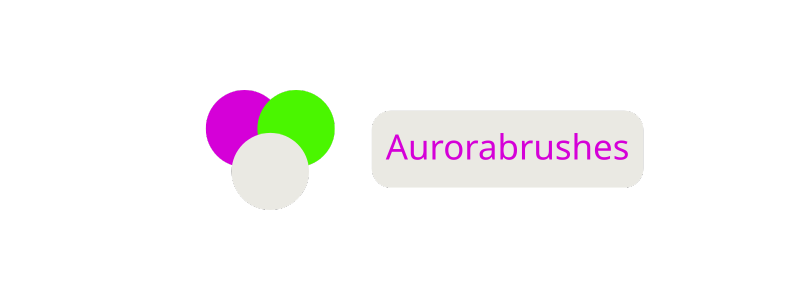Web Design Questions to Ask Clients: The Ultimate Guide to Successful Website Projects
When I start a new web design project the first thing I do is ask the right questions. Understanding what my client really wants saves time and helps me deliver a site that hits the mark. It’s not just about picking colors or layouts—it’s about digging deeper to uncover their goals and vision.
I’ve found that a few well-chosen questions can make all the difference. They help me avoid misunderstandings and set clear expectations from the start. By getting to know my client’s business and audience I can create a website that truly works for them.
Why Asking the Right Questions Matters in Web Design

Asking the right questions uncovers client objectives before starting any web design project. Client responses reveal specific business goals, intended audiences, and unique requirements that guide every stage of site creation. Clear question-and-answer processes help me clarify expectations, align strategies with the client’s brand vision, and anticipate challenges.
Poor communication often results in revising designs multiple times, delaying project timelines and increasing costs. Precise questions up front minimize these risks by ensuring each stakeholder shares the same understanding. When I have complete and accurate information, I deliver targeted design solutions that support measurable outcomes.
Feedback gathered through structured questions allows direct comparison between business requirements and creative concepts. Using tables makes it easy for both clients and designers to quickly reference and verify information. See the sample table below for commonly used web design question categories and their impacts:
| Question Category | Example Question | Impact on Design Process |
| Business Goals | What are the top 3 objectives for the new website? | Clarifies priorities and KPIs |
| Target Audience | Who are your primary customers? | Shapes user experience decisions |
| Content Requirements | What types of content must be featured? | Determines layout and navigation |
| Branding Preferences | What colors, fonts, or logos need inclusion? | Ensures brand consistency |
| Functionality Needs | Which features or integrations are essential? | Defines technical scope |
Answer consistency across these categories results in faster delivery, higher satisfaction, and project outcomes that always reflect the client’s intent. These structured processes serve all industries and niches, including high-regulation sectors such as online casinos. For example, when designing a casino site, clear up-front questions address legal compliance, secure payment gateways, and responsible gaming features, reducing risk of rework and enabling a seamless launch.
Essential Web Design Questions to Ask Clients
I focus my discovery process on targeted questions that clarify client objectives and design direction. These inquiry areas address core project needs, streamlining workflows for precise results.
Questions About Business Goals and Brand Identity
I gather specific information about business objectives and brand messaging.
- Describe core business goals (examples: increase sales, build brand awareness).
- Share the brand’s mission, vision, and values (examples: innovation, customer trust).
- List competitors and describe unique value propositions.
- Provide current brand guidelines, logos, and approved color palettes.
Business Goals Table
| Business Objective | Example Metric | Measurable Outcome |
| Lead generation | Monthly signups | 2,000 new users/month |
| Online sales | Conversion rate | 3.5% checkout conversions |
| Brand awareness | Website traffic | 30,000 unique visits/month |
Questions About Target Audience and User Experience
I validate user expectations and segment details.
- Describe target audience demographics (examples: age, region, device use).
- Identify audience pain points or needs (examples: mobile access, fast support).
- Specify key user journey steps (examples: product search, checkout).
- Prioritize accessibility and usability requirements.
Questions About Design Preferences and Inspirations
I clarify visual direction using references and preferences.
- List websites you admire (examples: competitor sites, industry leaders).
- Indicate preferred design styles or themes (examples: minimal, bold, professional).
- Highlight brand aesthetics to avoid (examples: certain colors, imagery).
- Provide any sample layouts or wireframes.
| Design Preference | Example Reference | Notes |
| Minimal style | apple.com | High contrast, simple |
| Bold color palettes | spotify.com | Vibrant, engaging visuals |
| Corporate feel | ibm.com | Blue hues, clear typography |
Questions About Website Functionality and Features
I identify core website features and integration needs.
- List essential pages or sections (examples: homepage, contact, FAQs).
- Specify interactive elements (examples: search, live chat, forms).
- Discuss third-party integrations (examples: payment processors, CRMs).
- Confirm any regulatory requirements for high-regulation industries.
Questions About Content and SEO Expectations
I collect inputs on content strategy and SEO benchmarks.
- Clarify who provides text, images, and multimedia assets.
- Identify essential keywords or SEO targets (examples: “[service] near me”).
- List blog, article, or resource sections.
- Specify content approval and revision workflow.
| Content/SEO Element | Responsibility | Details |
| Text content | Client or copywriter | 20 service pages |
| Images | Designer or client | 40 product shots supplied |
| SEO optimization | SEO specialist | 15 tracked target keywords |
| Blog setup | Designer | Integrated with WordPress |
Tips for Effective Client Communication

Active listening remains the foundation of effective client interactions. I confirm key details regularly and summarize my understanding to avoid confusion. Repeating client objectives and priorities—like « Your primary goal is increasing new user signups »—shows that I understand project intent.
Clear documentation keeps every stakeholder aligned. I use shared documents for meeting notes, decisions, requirements, and timelines, minimizing disputes and reducing the need for repeated clarifications. Version control through cloud platforms like Google Docs prevents outdated references during active web design projects.
Open-ended questioning uncovers deeper needs. I steer each conversation away from simple yes/no responses to detailed insights, like requesting examples of functionalities clients prefer—such as blogs, booking forms, or live chat modules.
Consistent milestone check-ins address project drift. I schedule brief progress reviews before each sprint or major deliverable and request clients to confirm current project priorities and flag concerns immediately.
Setting communication preferences simplifies collaboration. I confirm clients’ preferred channels—email, Slack, calls—or frequency for updates during the initial discussions, aligning workflows with client availability and habits.
Casino Website: Communication Pitfalls Table
I’ve observed recurring challenges in regulated industries like online casinos. Explicit documentation and confirmation become essential in projects like this:
| Communication Challenge | Example in Casino Web Design | Avoidance Strategy |
| Ambiguous compliance needs | Vague reference to gaming laws | Request client-provided legal docs |
| Unclear design restrictions | No specification on ad or color limits | Ask for regulatory brand guide |
| Misunderstood user flows | Different versions of registration pages | Share annotated wireframes |
| Last-minute changes | Sudden feature requests nearing launch | Set cut-off dates for change input |
Using these methods leads to transparent, productive client relationships and keeps web design projects aligned with business objectives and regulatory requirements.
Mistakes to Avoid When Interviewing Clients
Avoiding common pitfalls when interviewing clients for web design saves time and delivers a more effective project outcome. I focus on specific mistakes that undermine clarity, trust, and workflow efficiency.
- Skipping Discovery of True Goals
Prioritizing feature lists over business outcomes creates misalignment. I start each project by confirming the client’s core objectives and success metrics in measurable terms.
- Relying on Vague or Leading Questions
Using unclear or yes/no questions often hides important client preferences and assumptions. I favor open-ended, specific questions such as « What user action signals success for your business? » instead of « Do you want customer signups? »
- Overlooking Technical or Budget Constraints
Assuming clients understand all technical or budgetary implications leads to unrealistic promises. I document platform requirements, timelines, and investment ranges before finalizing project scope.
- Ignoring Stakeholder Diversity
Engaging only with one contact limits information flow. I ask about decision-makers and future content contributors at the start, reviewing their roles and influences on the web project.
- Failing to Clarify Brand and Content Responsibilities
Unclear handoff of brand guidelines and content needs causes project delays. I specify what materials the client provides and what my team develops, using checklists to avoid omissions.
Mistake Impact Table
| Mistake | Impact on Project | Example Context (Web Design) |
| Skipping discovery of true goals | Misaligned site structure | Homepage promotes wrong product |
| Using vague questions | Client confusion | Feedback contradicts earlier responses |
| Overlooking technical/budget constraints | Scope creep | Extra work required due to integrations |
| Ignoring stakeholder diversity | Last-minute changes | New decision-maker requests revisions |
| Not clarifying brand/content responsibilities | Delivery delays | Missing logo files at build phase |
Casino Website: Interviewing Pitfalls in Regulated Industries
Regulated industries like online casinos add layers of compliance, making interviews more complex. I monitor specific mistakes that raise risk and slow project timelines.
- Misunderstanding Regulatory Compliance
Treating regulations as an afterthought increases audit failures and rework. I clarify requirements for data privacy, geolocation, and user age verification before design.
- Overlooking Security-Driven Design Needs
Failure to address security at the planning stage leads to costly overhauls. I discuss data storage, payment integrations, and player verification in the first interview.
- Neglecting Customer Trust Factors
Missing compliance symbols or responsible gaming messages erodes user trust. I verify content and trust markers with clients at kickoff.
| Pitfall | Impact on Casino Web Design | Regulatory Example |
| Ignoring legal approval cycles | Extended go-live timelines | Multiple jurisdiction audits |
| Missing compliance documentation | Incomplete launch, fines | Absent licensing disclosures |
| Overlooking KYC/AML integration | Access denial, account lockouts | Failed user onboarding |
Conclusion
When I take the time to ask the right questions up front it transforms the entire web design process. Every project becomes smoother and more efficient when I understand my client’s real needs and expectations from the start.
Building trust through clear communication isn’t just about avoiding mistakes—it’s how I deliver results that truly reflect each client’s goals. With the right approach I can turn complex requirements into creative solutions that work for any industry.
Frequently Asked Questions
Why is it important to ask the right questions before starting a web design project?
Asking the right questions helps uncover the client’s true goals, audience, and unique needs. This ensures the final website aligns with business objectives, prevents misunderstandings, and reduces the risk of costly revisions or delays.
What kind of questions should web designers ask their clients?
Web designers should ask about business goals, brand identity, target audience, preferred design style, required features, content responsibilities, and SEO expectations. Covering these areas clarifies project requirements and streamlines the workflow.
How do structured questions improve web design outcomes?
Structured questions help compare business needs with creative ideas, set clear expectations, and guide the design process. This leads to faster delivery, higher client satisfaction, and a website that meets both client and user needs.
What are common mistakes to avoid during client interviews?
Avoid skipping discovery of real goals, asking vague questions, overlooking technical or budget constraints, ignoring diverse stakeholders, and failing to clarify who manages brand and content. Clear, detailed communication prevents these issues.
How can designers ensure effective communication with clients?
Use active listening, clear documentation, and open-ended questions to uncover deeper needs. Regular milestone check-ins and setting communication preferences also help maintain transparency and collaboration throughout the project.
Why is understanding the target audience important in web design?
Knowing the target audience’s demographics, pain points, and behaviors allows designers to create a user experience that addresses real needs and helps achieve the client’s business objectives.
What extra challenges exist for web design in regulated industries like online casinos?
Designers must understand complex compliance requirements, address security needs, and build customer trust. Overlooking these factors can lead to delays, rework, or even legal issues for the client.
How does clarifying technical requirements benefit the design process?
Defining technical requirements early helps avoid surprises, prevent compatibility issues, and ensures the website integrates smoothly with existing systems or third-party tools.
Why is it essential to set content and brand responsibilities upfront?
Agreeing on who provides content and manages branding responsibilities prevents delays and confusion, ensuring the project stays on track and reflects the client’s vision accurately.

